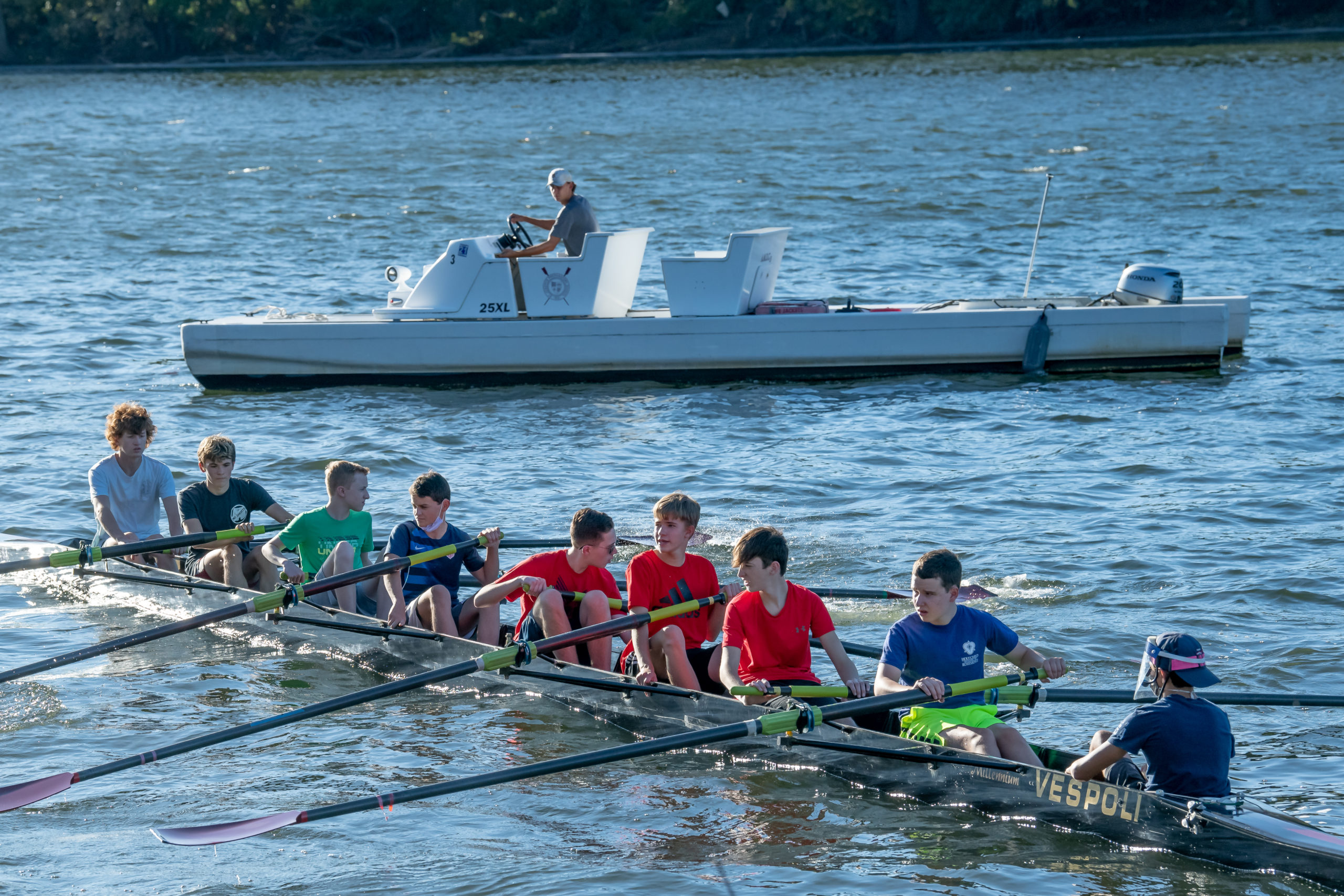BY MARGOT ZALKIND
PHOTO BY ED MORAN
To continue reading…
This article is exclusively for Rowing News subscribers. For as little as $5 a month, you can get access to the best quality, independent reporting on all the issues that matter to the North American rowing community.
Already a subscriber? Login
It’s still winter in most regions, so here are ways to use your off-time wisely for the benefit of your rowing organization.
Help your organization and help others
Years ago, a few of us put heads (and experience) together and formed the Potomac River Safety Committee. Coaches, referees, coxswains, scullers, and float captains from organizations that shared the same stretch of the Potomac felt strongly that not only is there wisdom in numbers but also that if we agreed on traffic patterns, standards, and policies regarding heat and cold, we could all help each other. The spirit of mutual support and accountability inspired us to share the work and develop the guidelines.
Learn from others
By creating a consortium, you share not only standards of safety but also avenues for communicating and enforcing your rules.
You also learn from others. Tony Johnson, then head coach at Georgetown, and the other experienced coaches were a leading force on the committee, and these knowledgeable resources for new coaches formed a solid standard of safe practices.
“We realized that the river was more and more crowded with novice rowers, novice coaches,” Johnson said. “I noticed an inexperienced coach out on the water in an eight of novice rowers, and he was coxing, rendering him incapable of handling a rescue, if needed.
“There were not enough controls, not enough people knowing to pay attention. I called some of them ‘cowboys on the river.’ So I was very glad we started this committee. Our message was ‘Be careful. Be aware. Look out for one another.’”
George Kirschbaum, who has years of hands-on leadership experience as coach and coxswain, still works hard to keep the committee afloat. He agrees that we are a safe sport, but some are irresponsible at times. The draw of being on the water can override reason.
Rules and Guidelines
Information such as safety standards, emergency contact numbers, and rescue procedures can be found on the Potomac River Safety Committee’s website. This committee still exists, and we have heard that Boston and Philadelphia have similar support systems. Please let us know if you have such a system in your area.
Review, Remind
At the beginning of every season, all Potomac River organizations sent their coaches, coxswains, and scullers to meet with our committee. We reviewed guidelines and then conducted an exam to reinforce the covered safety points.
Map it out
We created and posted a comprehensive map of the river, identifying all hazards and traffic patterns, complete with which bridge archway to use and when. If there is a lot of activity on your waterway, from fishing boats to scows, educate your rowers about likely challenges (and how to stay visible and safe). We are seeing more boats appear yearly, often with untrained coxswains, novice coaches, and inexperienced launch drivers.
Why not establish such a collaborative effort at your location? Not just rowing clubs, but also canoe, kayak, sailing, swim clubs, any other entity sharing your water. Invite enforcement representatives. Join forces with your neighboring organizations or take it on yourselves to form a safety committee at your club. Collaborate.
Work together
Post your rules, hazard maps, local contacts, safety standards, and make them visible. Use Websites and printouts.
Here’s a checklist for ensuring that all aspects of safety are covered in your safety plan:
- Emergency plans and rescue
- Contact information (emergency and more)
- Equipment guidelines
- Traffic patterns and hazards
- Cold-weather policies
- Weather and wind information
- River levels and currents data
- Water and air quality
- Courtesy on the water

